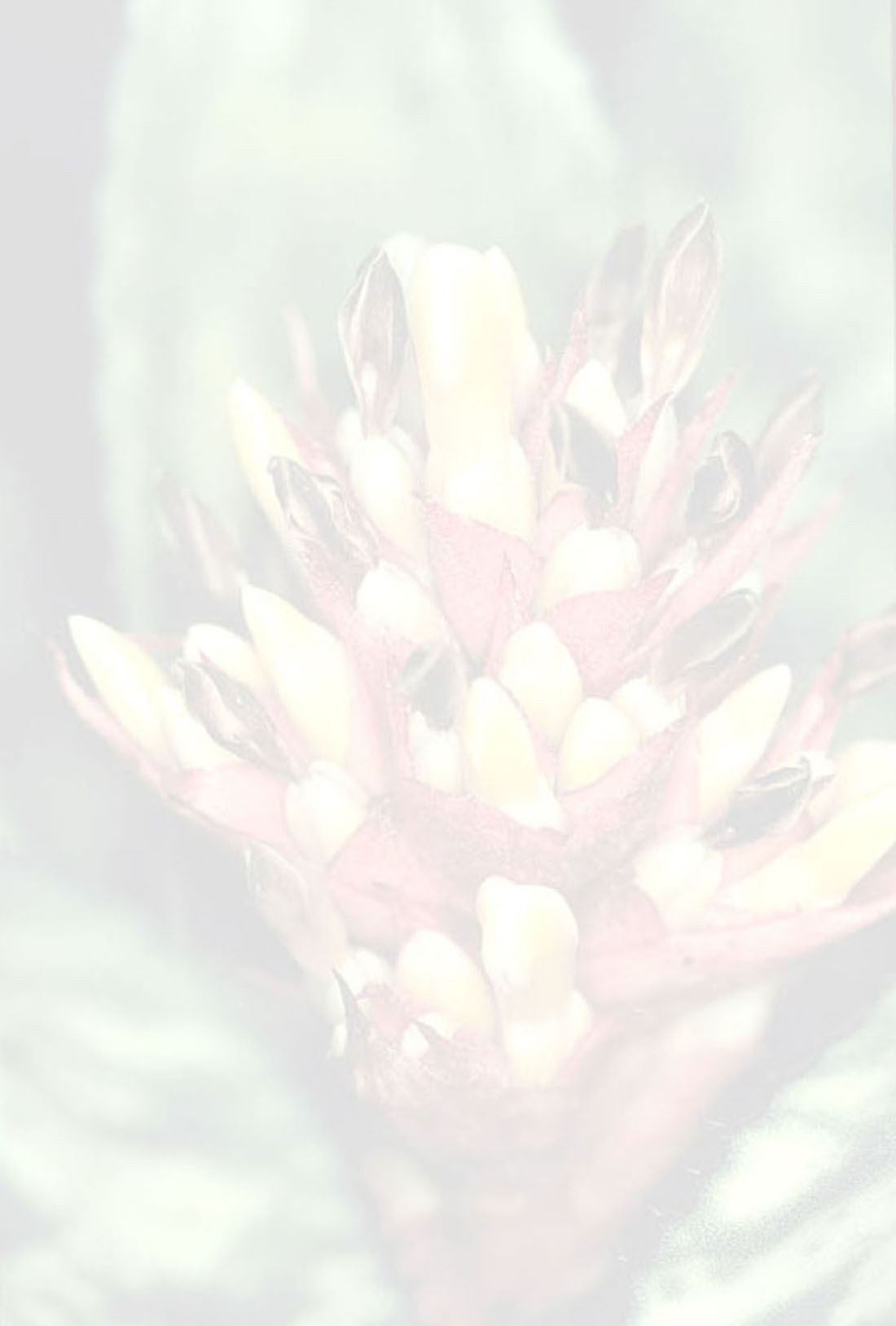



plant flowering to 110 cm high. leaves suberect to spreading, forming a rosette of about 90 cm in diameter; sheath distinct, ovate, to 14 cm long, 11 cm wide, base pale ferruginous, the inner surface dark violet and densely dark brown lepidote, margins entire; blade lingulate, apices rounded and pungent, cuspidate, to 60 cm long, 9 cm wide, few canaliculated, minutely appressed lepidote, margins serrate with antrorse, brown spines to 3 mm long. inflorescence: peduncle erect, terete, to 75 cm long, 12 mm in diameter, white lepidote; peduncle bracts erect, coriaceous, lanceolate and apiculate, enfolding the peduncle, to 14 cm long, 30 mm wide, appressed lepidote, margins entire, much longer than the internodes; fertile part twice-branched composed, to 20 cm high, 10 cm in diameter, axis erect, white lepidote; primary bracts narrow lanceolate, to 10 cm long, 12 mm wide, submembranaceous, pale salmonrose, boatshaped carinate, about of equal or to twice the length of the lateral branches, margins entire; lateral branches distant, short and stout-stemmed, divergent, composed of 2–3 densely capitate spikes; secondary bracts similar to the floral bracts but somewhat larger. flowers subsessile, to 38 mm long; floral bracts lance-ovate, acute, to 28 mm long, 15 mm wide, carinate, nerved, pale salmonrose, white lepidote; sepals lanceolate, pungent apiculate, coriaceous, with strongly asymmetric hyaline margins, 20 mm long, 10 mm wide, pale salmon-rose; petals narrowly ligulate, 30 mm long, orange, the inner base with two entire ligula each, stamens and style included. pistil: ovary somewhat trigonous, to 12 mm long, 7 mm in diameter; epigynous tube very distinct and large.Edited from (30-03-2023): Rauh 1985h. Two remarkable novelties from Brazil .